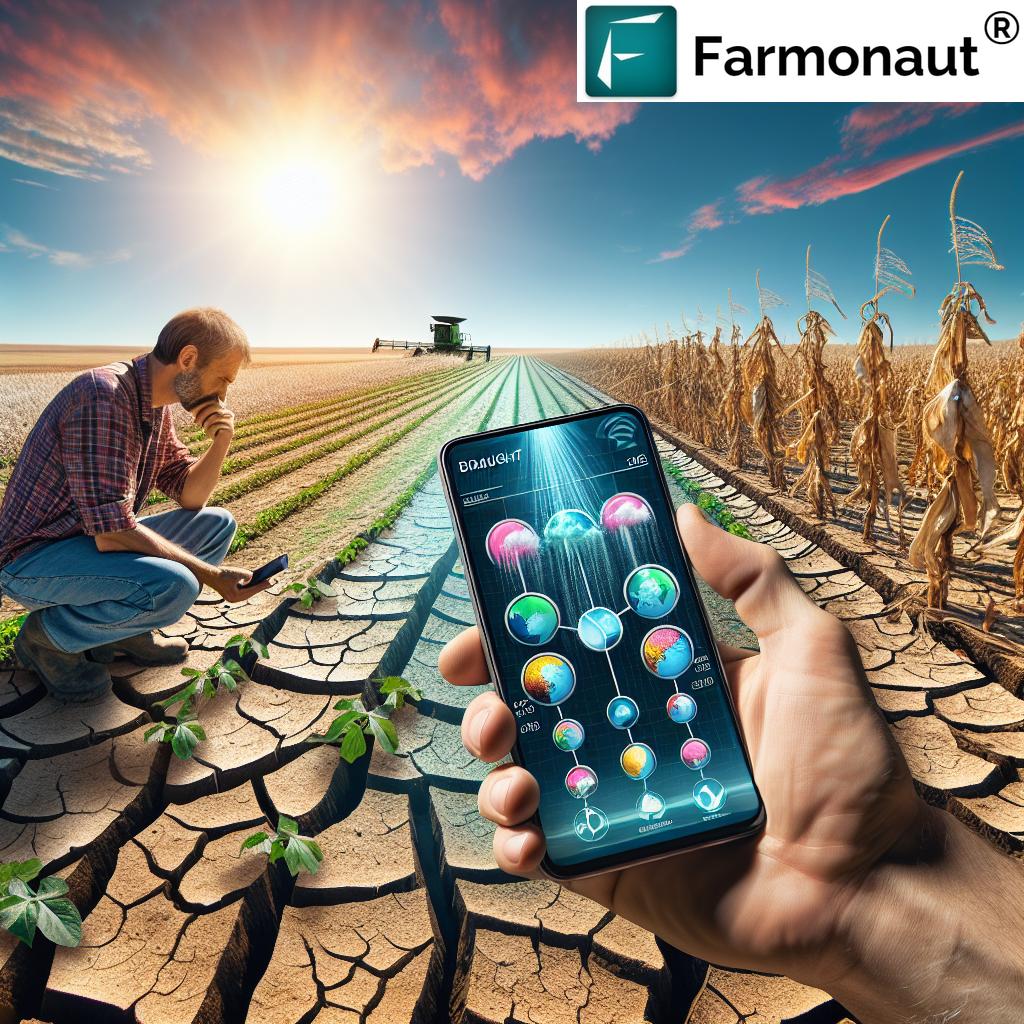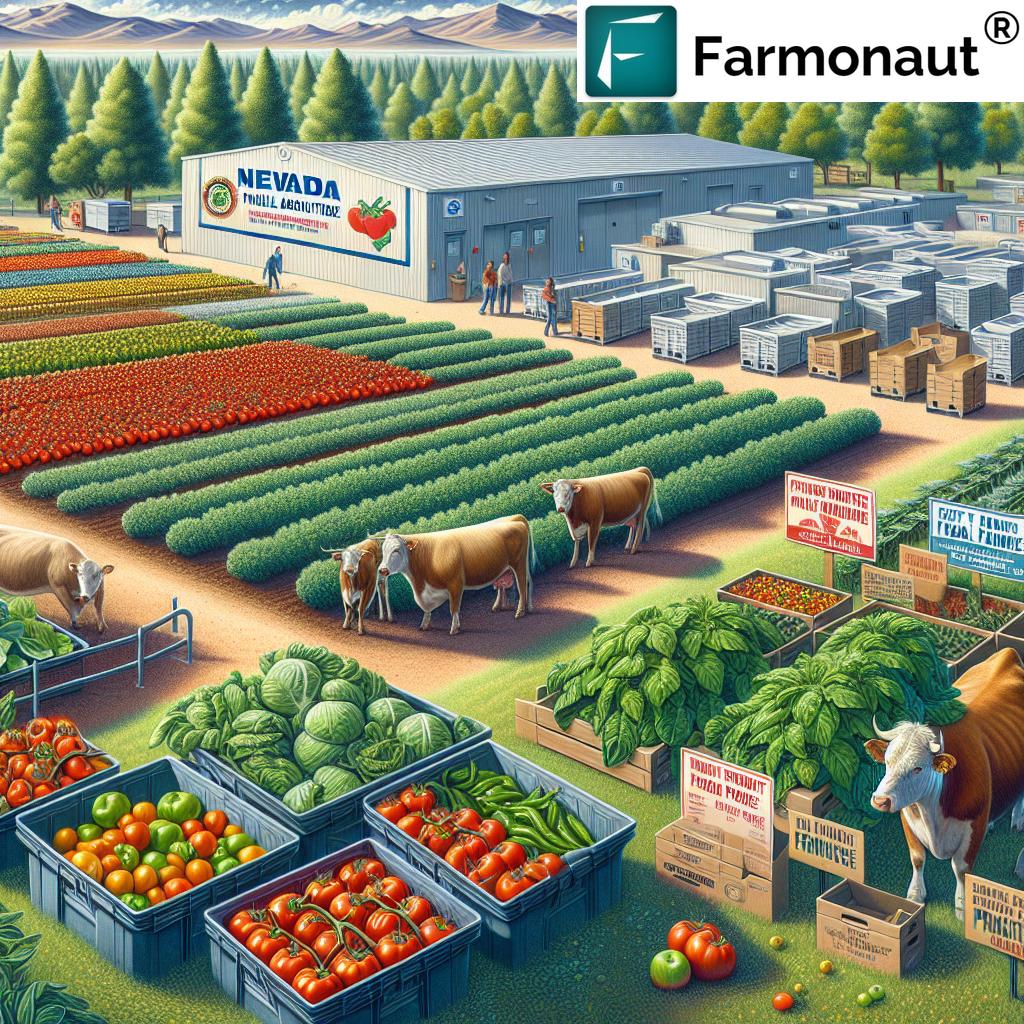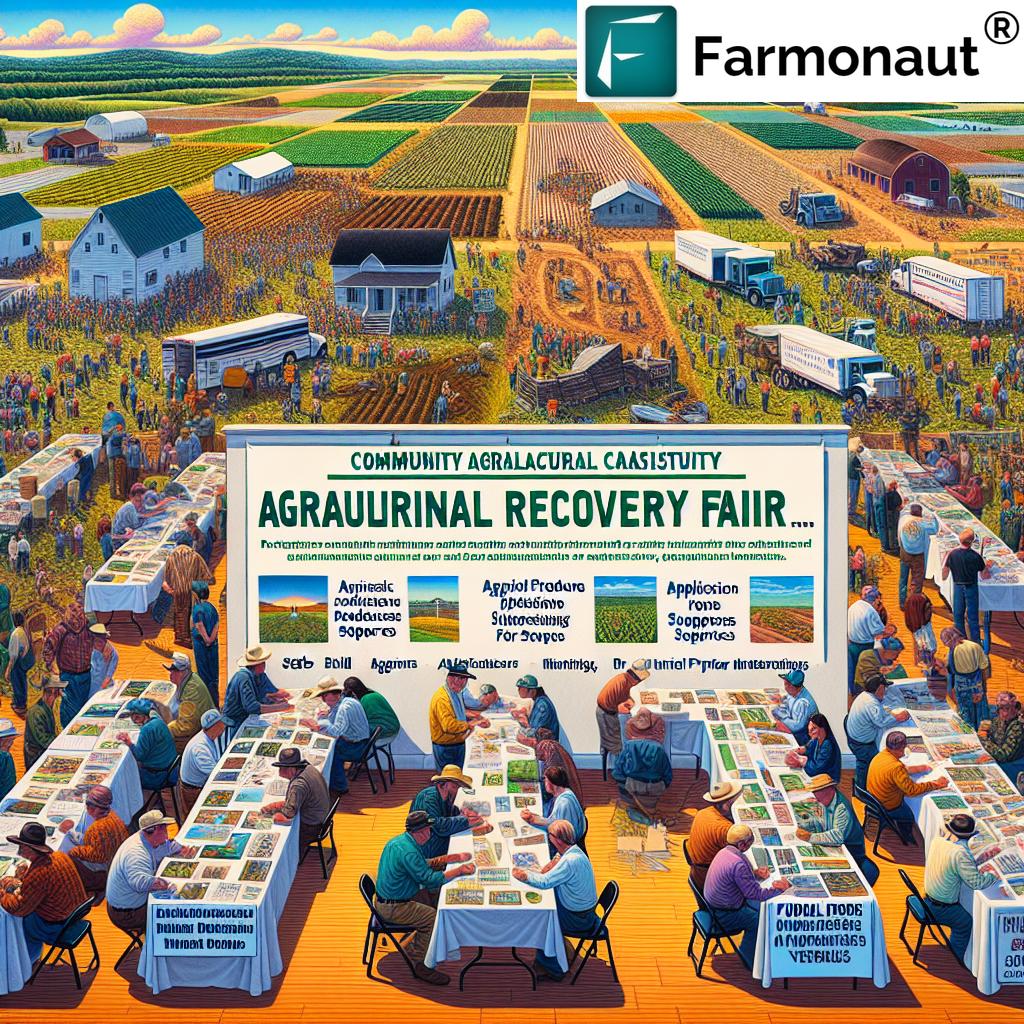How Did Mechanized Farm Equipment Impact Texas Farming? A Deep Dive into the Transformation of Texas Agriculture
Introduction: The Rise of Mechanization in Texas Farming
The mechanization of farm equipment in Texas triggered an unprecedented agricultural evolution. Historically, Texas agriculture, rooted in manual and animal power, has seen explosive change through the introduction of tractors, mechanical harvesters, and advanced irrigation systems. As the state’s economic engine, Texas agriculture’s landscape has been repeatedly reshaped by these waves of innovation, impacting everything from cotton production to modern precision agriculture technology.
Within this context, understanding the impact of mechanized farm equipment is more than a look at machines—it’s an exploration into how technological advancements have shifted labor dynamics, increased crop yields, and raised crucial environmental questions. From the late 19th-century steam tractors to today’s GPS-guided machinery, the journey reflects the broader evolution of agricultural practices in Texas.
Whether you’re a grower, historian, or simply interested in the modern challenges of agriculture in Texas, this comprehensive examination will detail:
- The historical stages of mechanization
- How cotton production in Texas was revolutionized
- The role of irrigation systems and crop diversification
- Changing labor dynamics and economic implications
- Key environmental impacts
- Modern precision technology and Farmonaut’s role in the future of precision agriculture
Early Mechanization and Its Impact on Texas Agriculture
The mechanization of farming in Texas began in the late nineteenth century, at a time when most operations still relied on labor-intensive, manual methods and animal power. In this era, the size of a farm and the speed of crop production directly depended on how many mules, horses, or laborers could be harnessed. This model limited productivity, especially in the vast open areas of Texas, where acreage often far outstripped the capabilities of human and animal resources.
The introduction of steam-powered and then gasoline-powered tractors marked a dramatic shift. Instead of relying on mules and horses as primary sources of power, these tractors enabled Texas farmers to cultivate larger areas much more efficiently and with less physical exhaustion.
- Steam tractors (late 1800s): Allowed for heavier plowing and deeper cultivation
- Gasoline tractors (early 1900s): More accessible to mid-sized and small farms, improved reliability and ease-of-use
The transition from animal power to mechanized tractors was fundamental because it catalyzed later advancements in cotton harvesting, irrigation systems, and overall efficiency of Texas farms. This period laid the foundation for modern agricultural practices by enabling the management of much larger tracts of land while reducing overall labor requirements and costs.
Mechanization of Cotton Production in Texas
No single crop symbolizes Texas agriculture like cotton. The mechanization of cotton production in Texas provides a powerful example of how farm equipment redefined the state’s agricultural landscape.
Before mechanization: Harvesting and ginning cotton was backbreaking and inefficient. It required entire families, and often hired laborers, to spend countless man-hours picking and processing cotton by hand under the Texas sun.
The key breakthrough was the marketing of mechanical cotton harvesters in the 1940s. These machines required just 6.5 man-hours to produce and gather an acre of cotton, compared to the previous average of 150 man-hours. By the late 1960s, cotton production in Texas was almost fully mechanized, with machine harvesters becoming the norm. This technological leap enabled:
- Massive reduction in labor requirements
- Substantial increases in productivity
- Significant cost savings on large-scale operations
- Enhanced economic viability for commercial farms and ranches
Cotton mechanization did not just change how much could be grown—it transformed the demographics and economic dynamics of rural Texas, as the need for seasonal labor diminished dramatically.
Expansion of Irrigation and Crop Diversification Strategies in Texas Farming
Mechanization was only one pillar of modernizing Texas agriculture. The other was the expansion of irrigation systems—especially across the High Plains region—and the strategic implementation of crop diversification strategies.
After World War II, Texan farmers began tapping into the Ogallala Aquifer using ground-breaking irrigation technology. This enabled the irrigation of millions of previously dry or drought-prone acres. By 1979, irrigated acreage peaked at 7.8 million acres, accounting for over a third of Texas farmland in production.
This expansion of irrigation fundamentally changed the structure and viability of agriculture in Texas in several crucial ways:
- Stabilized crop yields even in severe droughts
- Allowed growers to diversify crops beyond traditional cotton—enabling profitable production of corn, wheat, sorghum, peanuts, and specialty vegetables
- Supported modern agricultural practices requiring precise, reliable water supply
- Fueled further mechanization (e.g., center pivot irrigation systems requiring mechanized power)
Such development and diversification cemented Texas as a top-tier agricultural producer, even amidst challenging climatic variability.
Irrigation systems in Texas today increasingly benefit from precision agriculture technology—tools like Farmonaut’s large-scale farm management solutions for irrigation and resource optimization—helping Texas farmers schedule and distribute water more efficiently than ever before.
Labor Challenges in Agriculture, Urbanization, and Economic Implications
The mechanization of farming in Texas significantly impacted labor dynamics. With the adoption of mechanical power and advanced equipment, the demand for manual farm labor shrank rapidly.
Between 1945 and 1990, the number of Texas farms plummeted from 1.52 million to around 245,000. This drastic reduction was accompanied by the consolidation of smaller family farms and the emergence of larger, more capital-intensive commercial farms and ranches.
- Resulted in rural depopulation: As machines replaced people, many former farm workers and their families migrated to urban centers in search of new economic opportunities.
- Impact on community fabric: While some rural communities declined, many urban areas grew, partly fueled by this migration wave.
- Reshaped employment trends: The workforce shifted away from agricultural labor to manufacturing, services, and technology fields.
Over time, these labor challenges in agriculture led to ongoing debates: How should Texas strike a balance between maximizing efficiency through mechanization, and sustaining the social structures rooted in its rural landscape?
Economic implications were not limited to employment. Texas agriculture saw increased capital investment, more cost-intensive operations, and greater interdependence on technology, supply chains, and inputs.
To navigate modern economic complexities and optimize their commercial operations, many large growers leverage Farmonaut’s fleet and resource management tools—enabling effective vehicle tracking and cost efficiency at scale.
Environmental Impact of Farm Mechanization in Texas
While the mechanization of farm equipment has multiplied crop yields and efficiency throughout Texas, it has also introduced new environmental challenges. The use of heavy equipment poses certain risks that must be managed to safeguard the long-term viability of agriculture in the state:
- Soil compaction: Heavy tractors and harvesters can compress the soil, restricting water infiltration, root penetration, and ultimately, crop yields.
- Tillage and erosion: Intensive mechanized tillage makes topsoil more vulnerable to wind and water erosion. Some Texas regions have suffered annual soil losses of 1–2 inches due to exposed fields, reducing long-term land productivity.
- Pesticide and fertilizer runoff: Mechanized sprayers, while efficient, amplify the need for careful resource management to prevent chemical runoff, which otherwise contaminates waterways and impacts ecosystems.
As Texas farming continues to modernize, sustainable practices powered by innovative technology have become essential. Today, precision tools can help growers track their environmental footprint—such as Farmonaut’s carbon footprinting solution, which helps reduce the carbon emissions associated with large-scale mechanized agriculture.
Technological Innovations & Precision Agriculture Technology in Texas
The era of precision agriculture technology represents the current frontier in the evolution of farming in Texas. Advanced data-driven tools and platforms—such as GPS-guided tractors, drones, soil sensors, and satellite-based monitoring—are redefining what efficiency and sustainability mean for today’s growers.
- GPS-guided tractors: Reduce overlap and optimize field coverage, lowering fuel and input costs.
- Variable-rate seeding and spraying: Adjust application rates on the fly, increasing yield while minimizing waste.
- Drone and satellite monitoring: Deliver real-time insights into crop health, soil moisture, pest outbreaks, and nutrient deficiencies.
Precision agriculture technology has enabled Texas farmers to increase crop yields by up to 10–20% since the early 2000s, thanks to optimized resource use, reduced input costs, and improved field management.
We at Farmonaut champion this transformation, offering:
- Multispectral, satellite-based crop health monitoring (NDVI, soil moisture, and more)
- AI-driven advisory systems for personalized, real-time recommendations
- Open API access for seamless data integration with custom apps and research initiatives
- Developer documentation for building custom satellite-data powered solutions
- Simplified blockchain-based traceability for supply chain transparency and consumer trust
With tools that scale from smallholder farms to vast commercial operations, precision agriculture enables Texas growers to boost yields and minimize environmental impact—while managing risk with more precision than ever before.
For those seeking easier access to affordable, real-time crop health insights, nutrient management, and farm analytics, our android, iOS, and web app solutions offer robust, plug-and-play precision farming capabilities—no specialized hardware needed.
Supply chain integrity is paramount, especially for high-value crops. Discover more about how Farmonaut’s blockchain-based product traceability safeguards the provenance of Texas agricultural products from farm to consumer and supports compliance, brand trust, and transparency.
Equipment Maintenance and the Right to Repair Farm Equipment
Modern mechanized farm equipment brings tremendous productivity—and unique challenges. Today’s advanced tractors, harvesters, and planters often come embedded with proprietary software and complex electronics. This has led to a growing “right to repair farm equipment” movement across Texas and the United States.
- The issue: Many equipment manufacturers restrict access to diagnostic tools, repair manuals, and parts, forcing farmers to rely on authorized technicians. This increases maintenance costs and extends equipment downtime.
- The movement: Farmers advocate for legislation guaranteeing their right to independently repair their own equipment—or hire local providers, boosting rural economies and autonomy.
These equipment maintenance issues are not merely technical—they impact farms’ operational continuity, influence the economics of large and small producers, and are central to discussions about the future of agricultural innovation in Texas.
For our users running larger fleets and seeking greater control over operational data and maintenance, Farmonaut’s fleet management module supports digital record-keeping, remote monitoring, and comprehensive analytics—helping Texas growers keep their operations running efficiently.
Our mission at Farmonaut is to empower farmers and agribusinesses with data-driven insight, helping to navigate not just the promise of new technology, but the practical realities of maintenance, compliance, and equipment lifecycle management.
Evolution of Farm Equipment and Impact on Texas Cotton Yields
The progression of mechanized equipment directly shaped the efficiency, productivity, and sustainability of cotton production in Texas. The following timeline highlights key innovations, estimated yield improvements, and major impacts associated with each technological leap.
| Time Period | Mechanized Equipment Introduced | Estimated Cotton Yield per Acre | Key Impacts |
|---|---|---|---|
| Early 1900s | Animal-drawn plows, manual picking | ~150–200 lbs |
High labor requirement Limited acreage per farm Low efficiency and productivity |
| 1920s–1930s | Steam tractors, early gasoline tractors | 200–350 lbs |
Began replacing mules/horses Enabled larger fields Reduced human labor demand |
| 1940s | Mechanical cotton harvesters | 350–450 lbs |
Drastic labor cuts Time to harvest per acre plummeted Commercial farming growth, rural depopulation |
| 1950s–1970s | Center-pivot irrigation, combine harvesters | 450–600 lbs |
Enabled irrigation expansion Crop diversification Yield stabilization through droughts |
| 1980s–1990s | Electronic yield monitors, controlled input sprayers | 600-800 lbs |
Precision field management Reduced input costs Initial traceability/record-keeping |
| 2000s–Present | GPS-guided tractors, drones, satellite crop monitoring | 800–1,200 lbs (+20%) |
Precision ag increases yields Resource optimization Sustainability, improved supply chain trust |
How Farmonaut Advances Precision Agriculture in Texas
We at Farmonaut are dedicated to bridging the gap between cutting-edge technology and everyday farming practices—making precision agriculture technology accessible, affordable, and scalable for all Texas growers.
Our solutions, built on satellite imagery, AI, and blockchain, provide practical answers to longstanding Texas agricultural challenges:
Key Farmonaut Offerings That Revolutionize Texas Farming:
-
Satellite-Based Crop Health Monitoring: Instantly track drought stress, pest risks, and nutrient deficiencies with NDVI and multispectral imagery.
Benefit: Make informed, timely decisions for irrigation, fertilizer, and pest management—maximizing crop yields on every acre. -
Jeevn AI Advisory System: Receive crop-specific insights, weather alerts, and actionable field strategies, based on real-time data.
Benefit: Boost productivity and efficiency; tackle evolving pest and weather challenges with science-backed advice. -
Blockchain-Based Product Traceability: Create secure, verifiable supply chains across Texas agriculture and food sectors.
Benefit: Enhance brand trust, ensure product authenticity, and comply with modern food traceability requirements. Explore traceability solutions -
Fleet and Resource Management: Keep every machine and team member on track—even across the largest commercial operations.
Benefit: Reduce operational costs, expand safely and efficiently, and manage maintenance records digitally. Discover fleet management -
Carbon Footprinting: Track and reduce your farm’s carbon emissions—meet regulatory needs and satisfy the growing demand for sustainable products.
Benefit: Drive environmental stewardship and unlock new opportunities in premium and eco-sensitive markets. Learn more about carbon tracking -
Crop Loan & Insurance Verification: Use satellite-based verification to streamline crop insurance and loan processes.
Benefit: Get faster, fairer access to critical financing with real-time land and crop data. Understand loan & insurance verification -
Large Scale Farm Management: Manage hundreds or thousands of acres with centralized dashboards, recordkeeping, and custom analytics.
Benefit: Simplifies complex operations, enhances compliance, and drives economies of scale. See our large-scale management tools
Farmonaut’s modular platform is accessible on Android, iOS, and via a robust web interface, making it easy to harness the power of precision agriculture on every Texas farm—from independent growers to agribusiness giants.
With flexible subscription-based pricing and comprehensive API documentation, our service is engineered for scalability. Whether you need satellite crop health monitoring for a single field or region-wide data for agribusiness analytics, we deliver actionable intelligence that transforms productivity, profitability, and sustainability.
Conclusion: Balancing Progress and Sustainability in Texas Agriculture
The mechanization of farm equipment has been both a triumph and a challenge for Texas agriculture. It launched the state to the forefront of national cotton production, enabled world-class crop diversification, and powered economic growth. Yet, it’s also made agriculture more dependent on technology, introduced new environmental pressures, and altered the social and rural landscape.
The story of mechanized farm equipment in Texas is, ultimately, a story of adaptation. As we advance further into an era of satellite monitoring, AI advisory systems, and data-driven resource management, the challenges of sustainability, labor, and technological accessibility persist.
Our mission at Farmonaut is to empower every Texas farmer, agribusiness, and community—with tools that make precision agriculture technology practical, profitable, and sustainable. Through innovation and education, Texas and its farmers can continue to grow, evolve, and lead the world in modern agricultural practices.
FAQ: Mechanization of Farming in Texas
1. What was the biggest impact of farm mechanization on Texas agriculture?
The transition to mechanized equipment drastically improved efficiency, crop yields, and economic viability, while reducing the dependence on manual labor. Cotton production especially benefitted, with machine harvesters enabling the management of larger acreage at lower costs.
2. How did mechanization affect rural Texas communities?
Labor needs declined sharply, leading to a reduction in farm-based employment and migration from rural to urban areas. This shift changed the fabric of many rural communities and redefined regional economic dynamics.
3. What is “right to repair” in the context of Texas farm equipment?
The right to repair movement advocates for farmers’ access to the parts, tools, and software needed to independently repair their machinery. This movement is crucial as modern equipment often restricts these rights, increasing costs and dependency on manufacturers.
4. What environmental issues are linked to farm mechanization?
Mechanized farming can cause soil compaction, erosion, and fertilizer/pesticide runoff. Managing these challenges is essential to ensuring the sustainability of Texas agriculture, often requiring modern technology to monitor and mitigate environmental impacts.
5. How does Farmonaut support Texas farmers in the age of modern mechanization?
We at Farmonaut offer data-driven solutions such as satellite crop monitoring, AI-based advisory, blockchain-based traceability, fleet management, and resource optimization tools. These allow Texas farmers to maximize yields, reduce costs, improve sustainability, and maintain transparency in the modern, mechanized era.
6. Where can Texas farmers access Farmonaut’s platform and resources?
Farmonaut is available on web, Android, and iOS platforms. We also offer open APIs and developer documentation for deeper integration with custom projects across Texas agriculture.
















